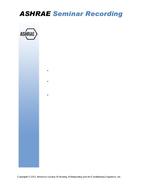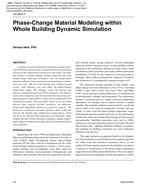Click here to purchase
Metropolitan areas have their specific climate. The main distinguishing aspect of this climate is a marked increase in temperature within the urban canyons compared to suburban areas, known as the urban heat island. This phenomenon is primarily caused by widespread industrialization and rapid urbanization, increasing anthropogenic heat and decreasing greenery. The urban heat island might affect the building structures, particularly historical buildings in metropolitan areas that are not well prepared against these significant alternations. Mashhad is Iran’s second-largest city and one of the important tourist centres. It hosts some unique Timurid heritage that may be impacted by this phenomenon. The scope of this study is to investigate the effects of the urban heat island on Mashhad’s Timurid heritage by employing hygrothermal modelling. The existence of the urban heat island in the city is assessed by comparing climatic data recorded in two stations inside the city, plus Mashhad synoptic station and a rural station. Following that, the hygrothermal behaviour of building components is modelled during 2019–2020 based on analyzed climatic data to deliver a more detailed knowledge of this phenomenon’s impact on heritage. The analytical results indicate that a clear urban heat island exists in this city, particularly during summers resulting in a higher ambient temperature and relative humidity, followed by a notable decrease in wind velocity, which led to a significant decrease in wind-driven rain and the moisture content of building elements in urban canyons compared to the outer layers of the city and rural areas. Additionally, due to the higher material’s relative humidity during warm months resulting from a sharp increase in the number of tourists, the risk of bio-deterioration, salt crystallization and mould growth has increased.
Product Details
- Published:
- 2022
- Number of Pages:
- 10
- Units of Measure:
- Dual
- Product Code(s):
- DBldgsXV-C047


